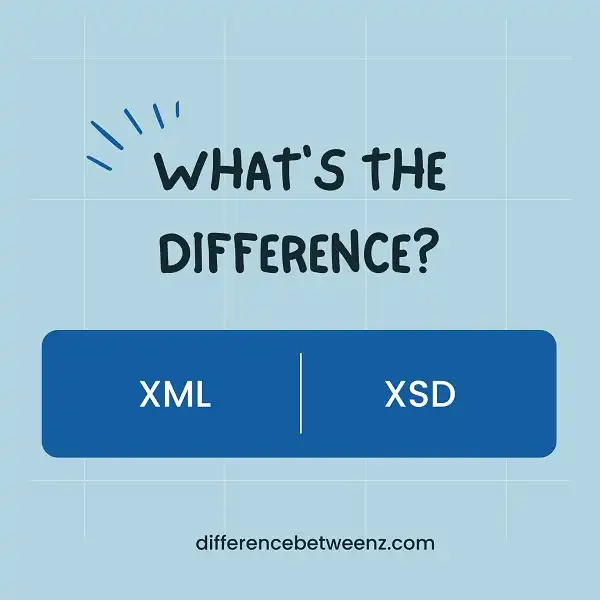XML and XSD are both important technologies used in many applications. While they have some similarities, there are also key differences between them. In this blog post, we’ll take a closer look at what those differences are, and how they can impact your work.
What is XML?
XML (Extensible Markup Language) is a markup language that allows for the encoding of documents in a format that is both human-readable and machine-readable. XML provides a means of structuring data that is both flexible and scalable, making it well-suited for a wide range of applications. One of the key features of XML is its use of tags, which are used to identify the start and end of each element. This allows for the easy parsing of XML documents by computers, as well as providing a consistent way of representing data. Another key feature of XML is its support for namespaces, which allows for the definition of custom tags and attributes. This makes XML an ideal choice for many applications that require the exchange of data between different systems.
What is XSD?
- XSD is an XML-based schema that defines the structure of an XML document. It is used to validate XML documents to ensure that they are well-formed and adhere to a particular schema.
- XSD schemas are generally expressed in terms of XML elements, which makes them easy to understand and work with. However, they can also be expressed in other ways, such as using regular expressions or XPath.
- XSD provides a number of benefits over other schema languages, such as DTDs. For one, it is much more powerful and expressive. Additionally, it is easier to use and understand, and it supports data types that are not available in DTDs.
- Overall, XSD is a very useful tool for defining the structure of XML documents. It is widely used in a variety of applications, and its benefits make it the schema language of choice for many developers.
Difference between XML and XSD
- XML and XSD are both markup languages that are used to structure data. XML, or Extensible Markup Language, is a standard for encoding data in a text format. XSD, or XML Schema Definition, is a language for describing the structure of XML documents. Both XML and XSD are implemented using the W3C standard.
- XML is a flexible language that can be used to represent data of any type. It is commonly used for storing and exchanging data on the web. XML documents must be well-formed in order to be parsed by an XML processor. In contrast, XSD is a schema language that is used to define the structure of an XML document. An XSD document defines the elements, attributes, and types of an XML document. A well-formed XML document must also be valid according to its corresponding XSD schema. Validation is important because it ensures that an XML document contains only information that is allowed by the schema.
Conclusion
In short, XML is a data format that can be used to store and transport data, while XSD is a schema language used to define the structure of XML documents. If you’re working with XML files, it’s important to understand the difference between these two technologies in order to create or interpret documents correctly.


